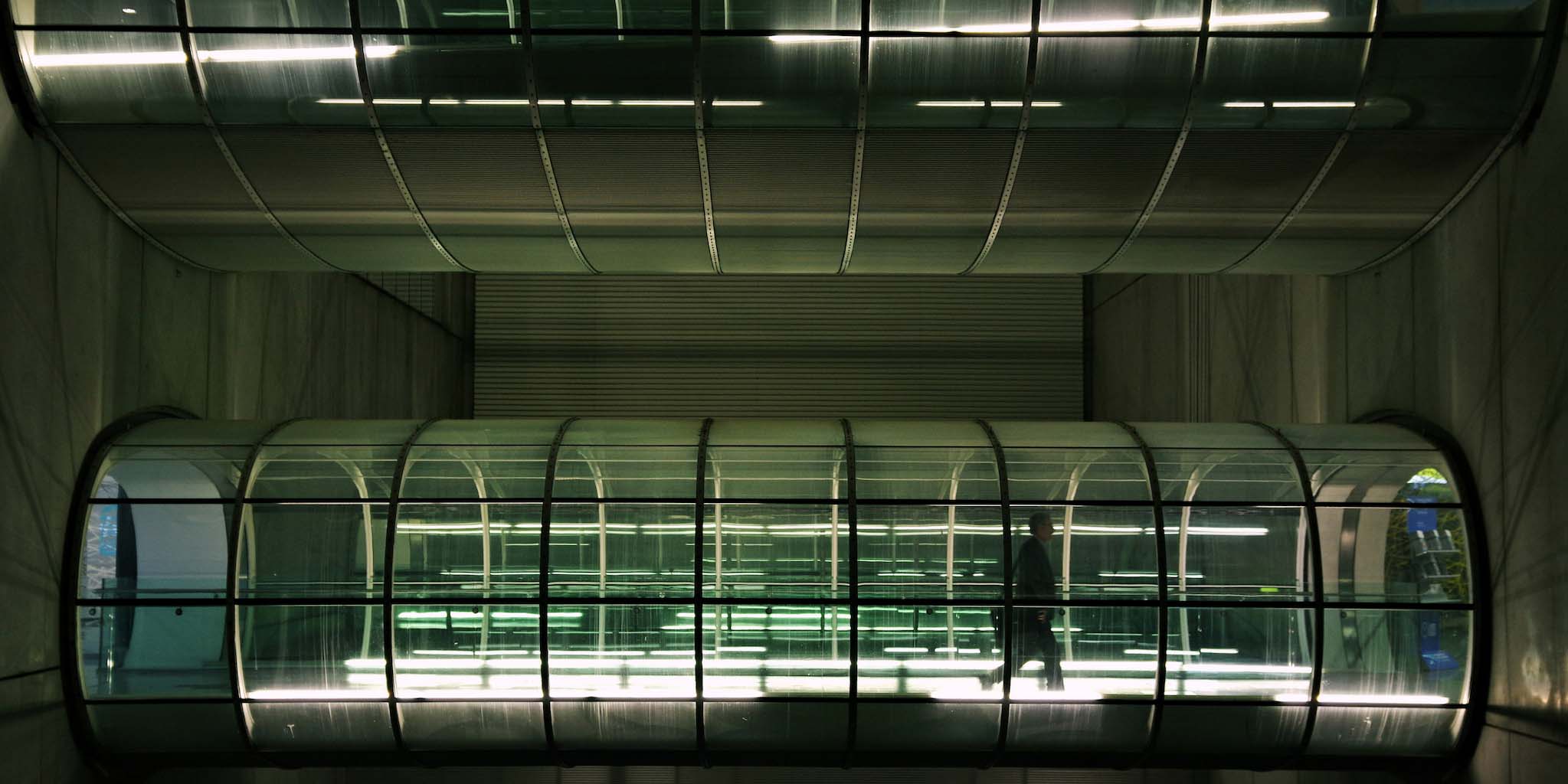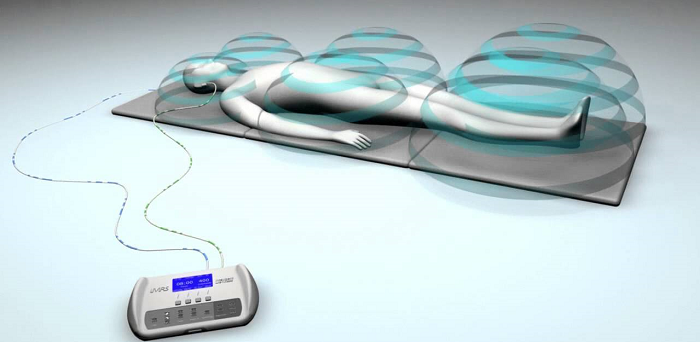The United States is currently the global leader in science and technology. However, if you walk into any airport here these days, you may roll your eyes at this statement. You are not alone. Notable figures such as Former Vice President Biden have also spoken publicly about the sorry state of our airport design.
“If I blindfolded someone and took him at 2 o’clock in the morning into the airport in Hong Kong and said, ‘Where do you think you are?’ he’d say, ‘This must be America. It’s a modern airport,'” Biden once said. “If I blindfolded you and took you to LaGuardia Airport in New York, you’d think, ‘I must be in some third-world country.’” When people in the crowd started laughing, Biden told them he wasn’t joking.
Pretty sad, isn’t it? The problem isn’t just dated infrastructure, though. Our airports simply don’t work for us as users of the system. Think about it…
How many times have you felt lost in an airport because there were no clear instructions directing you where to go?
How many hours have you been forced to sit, cramped in a crowded terminal or on a hot, stuffy plane that’s been delayed from taking off?
How many minutes have you stood in a security line that was so dreadfully long, you were convinced you’d miss your flight?
How many times did you truly feel safer because of the security process?
It’s no secret that positive user experiences in our airports is at an all-time low. But to fix it, we need to understand a little bit about U.S. history, and why our airports stress us out so much in the first place.
The U.S. is home to some of the oldest airports in the world, and we began investing heavily in these before World War II. Back then, flying was considered a glamorous and an elite way to get from Point A to Point B. It certainly wasn’t the common method of travel that it is today due in part to the cost. And back then, human factors expertise was not the established industry of practice that it is today. The human factors industry creation is in part due to the Air Force. During WW II, the Air Force realized that poor design of controls within their airplanes were resulting in military deaths. The focus at the time was more on the human fitting the machine than designing the machine to fit the human. While human factors expertise helped to correct this, it took a long time for the science to move from government to mainstream industry inception – missing the early expansion of airports. The airports of the day weren’t designed to handle the sheer volume of passengers that pass through them today in 2019. Their builders and engineers didn’t anticipate that these structures wouldn’t work for future generations and the amount of travel technology would enable for work and leisure. While we can’t change the past, we can implement better designs now that will work for us and for generations to come.
Unlike countries with brand new, user friendly airports, the U.S. has been primarily focusing on airport updates instead of new builds. The costs, the politics, the pollution – these are all reasons why most U.S. cities don’t want to start from scratch. This is understandable. In addition, it’s difficult to make changes to airports, as there are many legal restrictions – not only from the standpoint of security and safety but also from the use by multiple airline carriers. However, we need to start making upgrade decisions that consider how airports and their systems are being used rather than just upgrading for latest technology or financial gain motivations. How can we do that?
Goodbye chaos… Let’s create a better passenger flow.
Good designers know that when there’s not much space to work with, they’d better make excellent use of the space they do have. Airports may not have room to expand out, but in many cases they can expand up. This extra room would be valuable for curbing crowd congestion. For instance, as passengers arrive at the airport, they could be split into two groups. One group – we’ll call them the “high tech group” because they already checked in on their mobile devices – would follow easy-to-understand signage directing them upstairs. The second group – let’s call them the “in-person group” because they need more assistance checking in – would follow similar signage to check-in counters on the ground level. There is no need to mix these two groups together. They would only meet up once they got to security. Revamping the check-in procedure to be user friendly would not only eliminate crowd chaos, but it would create a process that’s designed to fit the needs of users. It would also save passengers and airport workers so much time and money.
Speaking of money… The trade group Airlines for America reported that “assuming $49 per hour as the average value of a passenger’s time, 2017 delays are estimated to have cost air travelers billions of dollars. FAA/Nextor estimated the annual costs of delays (direct cost to airlines and passengers, lost demand, and indirect costs) in 2017 to be $26.6 billion.”
As technology progresses, it’s safe to assume that in the future there will probably be check-in procedures that don’t require people at all or bypass our traditional view of security checks and balances. Because of this, airport space needs to be kept flexible so that it can be updated to reflect advances like these.
Let’s stop dreading TSA security lines.
For many passengers, the most dreaded part of the airport experience is the TSA security line. If there’s ever a place where the user is put last, this is it. Let’s face it… Passengers already feel like they’re being looked at suspiciously (well, because they are). When forced to stand in a bottle-necked crowd, this feeling of unease only gets worse – turning into irritation and anxiety. Taking shoes off and laptops out of bags can be tedious and stressful. Some passengers must also struggle to take anxious pets out of carriers to be checked. And let’s not forget about those security bins. Scientists recently issued a report that said these bins contain more germs than airport toilets! The worst part: While passengers are subjected to security bins, evidence doesn’t show that they increase safety.
The good news is that by using technology designed with human needs in mind, this process can one day be turned into a user-friendly experience that increases safety and security. For example, passive terahertz technology, which can be used to screen multiple passengers simultaneously from 25 feet away, may be a possible solution down the road. If placed in areas where people don’t even know they’re being scanned, it could eventually eliminate the need for security checkpoints altogether. It may also deter terrorists who may be targeting security checkpoint lines. While the technology isn’t quite advanced enough yet to eliminate checkpoints, we must continue to look at user friendly options like this that enhance our safety and make us happier passengers.
Airports need human factors experts to succeed.
When it’s time for an airport redesign (or a new build), human factors experts are the key to success. Enormous projects like this involve a wide variety of experts, and they are often not on the same page with their goals. Just look around at some newly remodeled airports and you can see the obvious disconnect that took place. What we often get looks like a building that’s going through an identity crisis. In a blur of shops, restaurants, and lots of artwork, passengers are typically left confused about where to go, what they need to do, or how to find a bathroom they can fit in with luggage! As designers, we need to enforce that just because something looks nice, doesn’t mean it will work or be used in the way that it’s intended. When human factors experts are involved in a project like an airport design, it guarantees that all groups will work together with the goal of creating the best user experiences for passengers. Only then will we be able to design spaces that will help us take off into a bright future and truly epitomize Better Business by Design™!






